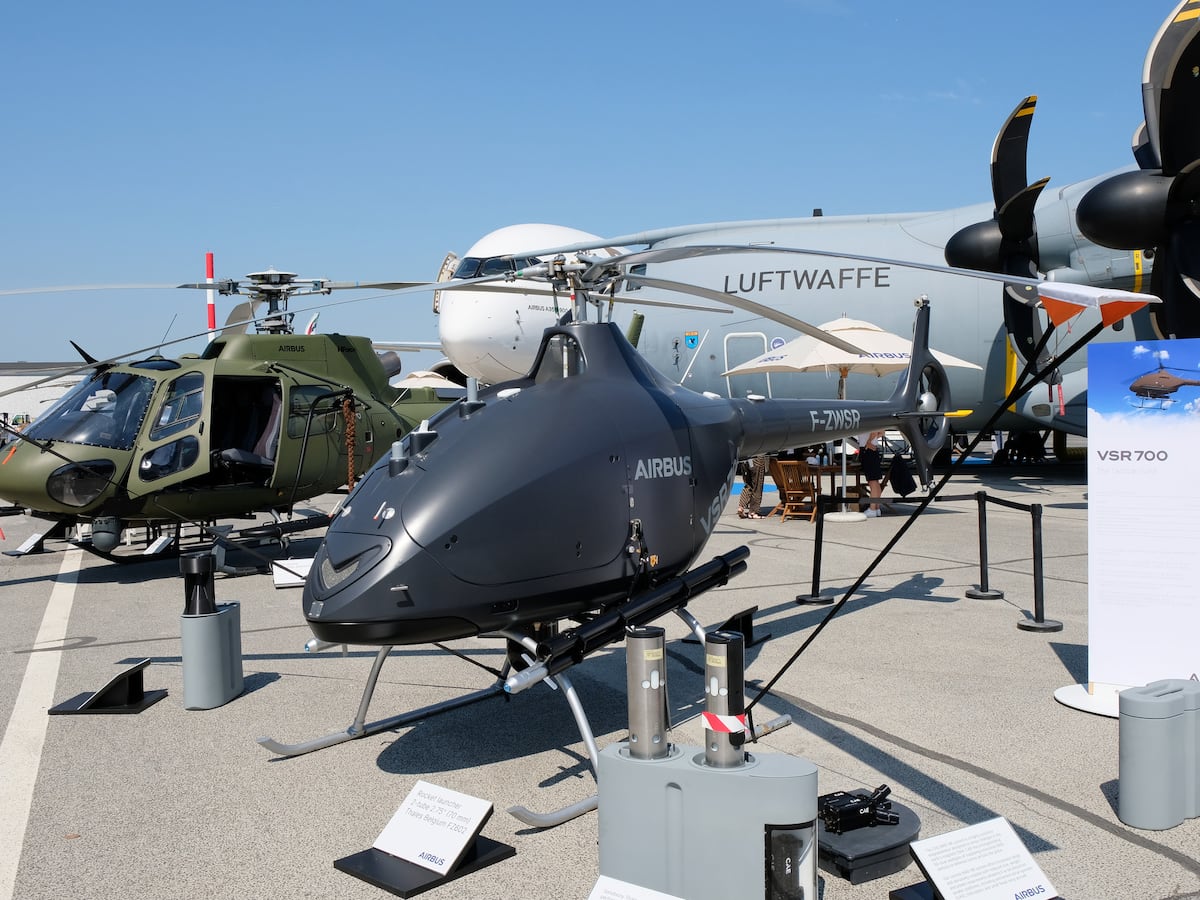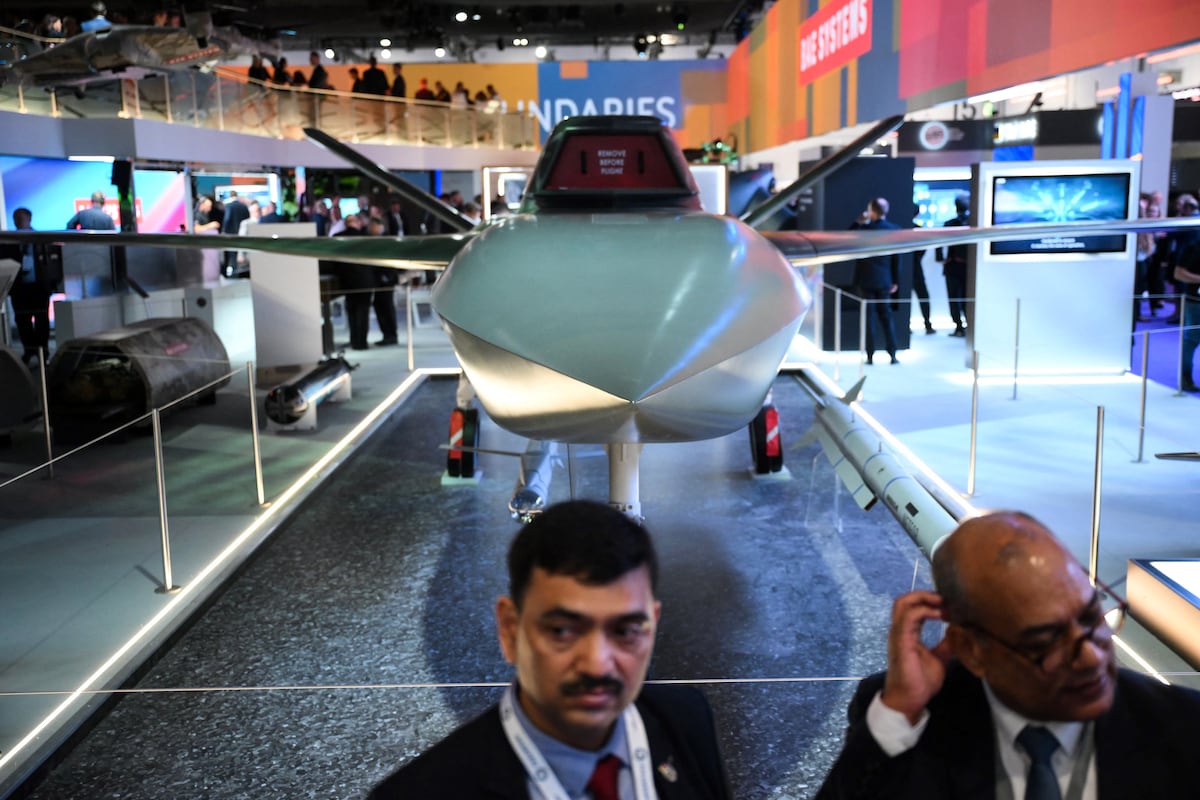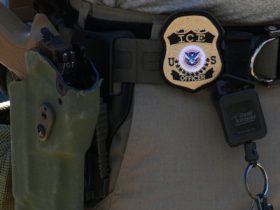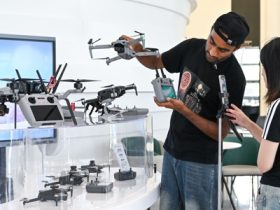PARIS — Airbus Helicopters sees a large market for its unmanned VSR700 rotorcraft in intelligence gathering as well as for tasks that are “dull, dirty and dangerous,” the head of unmanned aerial systems at the world’s biggest helicopter maker told Defense News at the Paris Air Show.
The company also sees “strong demand” for its HTeaming system that lets helicopter crews control unmanned aerial systems in flight, Victor Gerin-Roze, head of UAS at Airbus Helicopters, said at show here last week. The system is modular and can be retrofitted to existing aircraft.
In a first step, France signed a framework contract on June 17 to equip the French Navy’s frigates with six VSR700 drone helicopters, while inviting other nations to join the program. Meanwhile, Singapore signed an agreement last week to test crewed-uncrewed teaming between the Airbus H225M helicopter and the company’s Flexrotor UAS using HTeaming.
Airbus sees the market for the VSR700 as “quite large, especially considering the different types of missions that we can envisage,” Gerin Roze said. “It’s already sea-tested, it’s operational, but we need to finalize the development.”
The executive said the naval version of the VSR700 is the only unmanned aircraft of its size able to land automatically on deck. The helicopter drone can land autonomously on a moving deck in sea state 5, corresponding to rough seas with waves up to 4 meters, using beacons on the deck and without relying on satellite navigation.
France counts on buying ten of the drones for the navy by the end of 2030 as part ot its defense budget plan, and a total of 15 by 2035. The version for the French Navy is equipped with radar, an electro-optical system and an AIS vessel-tracking receiver.
The first VSR700 units will equip four of France’s eight multi-mission frigates and two out of five of its future Defense and Intervention Frigates, the country’s Directorate General for Armament said.
The VSR700 is an uncrewed version of the Cabri G2 by France’s Helicopteres Guimbal, a two-seat helicopter with carbon fiber fuselage and an advertised base price of €418,000 (US$479,000). Airbus replaced the seats with a bigger fuel tank, mission equipment and avionics, with the unmanned helicopter having a maximum takeoff weight of 760 kilograms.
“What is very interesting is that we start from an existing base, certified and already mission proven in different conditions, and we have dronized it,” Gerin-Roze said.
In addition to the maritime-surveillance version, Airbus presented an armed-scout version of the unmanned helicopter at the air show, with other possible configurations including an anti-submarine and surface vessel role or as a cargo drone.
The same technology used on the VSR700 can be used to turn other platforms into drones, with the autonomy brick “a kind of turnkey solution,” according to Gerin-Roze. He said the H145 is the next step, with Airbus already developing an autonomous, uncrewed version of the U.S. Marine Corps variant of the helicopter, the UH-17 Lakota.
Airbus at the Paris show also presented Flexrotor, a 25-kilogram drone that takes off vertically before tilting to winged flight, and tested earlier this month by the French Navy on one of its high-seas patrol vessels, which lacks a flight deck. The UAS was developed by U.S.-based Aerovel, acquired by Airbus in 2024.
Gerin-Roze said the drone when packed is small enough to be carried at the back of a H145 helicopter or a pickup truck. “Taking off from a ship is not an issue, we did some demonstration on decks, you would not even think that something can land on it.”
Teaming missions could include a Flexrotor flying several kilometers ahead of a troop-transporting H225M to scan a landing area, according to the executive.
Airbus Helicopters has been working on crewed-uncrewed teaming for several years, flying its H135, H145 and H130 models with different drones, including the VSR700 and the Flexrotor.
Airbus showcased its HTeaming system for crewed-uncrewed teaming at the Paris Air Show, with a commercial offering planned for 2026. The system can be retrofitted to any helicopter using a modem and four antennas, with the crew controlling the drone using a ruggedized tablet, according to Gerin-Roze.
“We know the workload it represents to pilot a helicopter, so when we developed the tablet, we had in mind to ensure that the additional workload is limited,” Gerin-Roze said. The executive said teaming between helicopters and drones “is really where we have our competitive advantage – we’ve been making cockpits since a long time.”
Airbus is the first to propose anything like HTeaming, according to Gerin-Roze, who said early adopters will probably be defense and security, before the technology spreads to civilian uses.
The company is working on artificial intelligence to allow a helicopter to team up with multiple drones as a next step, and has started working on swarming technology, Gerin-Roze said.
Rudy Ruitenberg is a Europe correspondent for Defense News. He started his career at Bloomberg News and has experience reporting on technology, commodity markets and politics.
Read the full article here








Leave a Reply